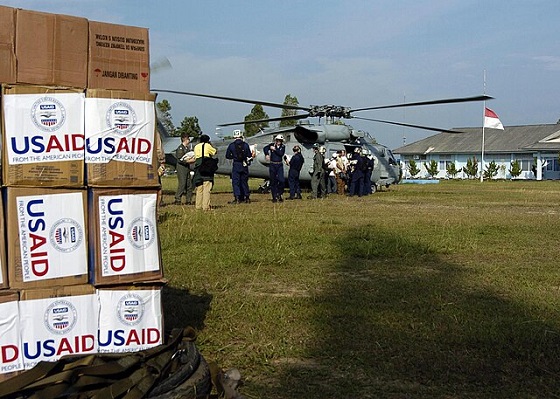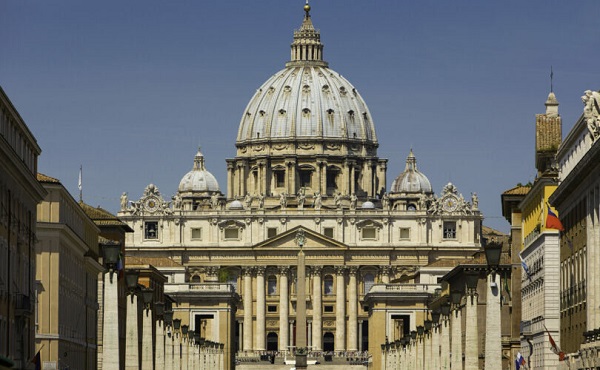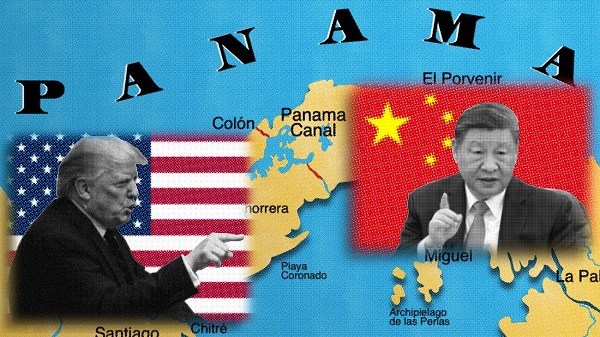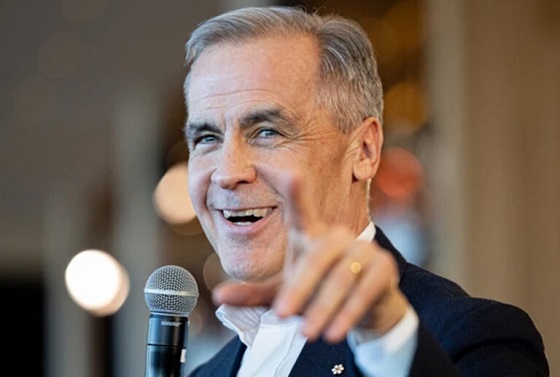International
Trump Admin announces 90% of USAID contracts to be cut

 MxM News
MxM News
Quick Hit:
The Trump administration has announced the elimination of more than 90% of the U.S. Agency for International Development’s (USAID) foreign aid contracts, amounting to $60 billion in cuts. The administration argues the decision targets “significant waste” while realigning U.S. foreign assistance to better serve American interests.
Key Details:
- Over 5,800 of 6,200 USAID contract awards will be terminated, totaling $54 billion in cuts.
- An additional $4.4 billion will be cut from State Department grants, impacting 4,100 of 9,100 programs.
- The administration claims the cuts will curb waste and enhance efficiency, while critics argue it undermines U.S. global influence and humanitarian efforts.
Diving Deeper:
The Trump administration’s decision to cut more than 90% of USAID’s foreign aid contracts marks a significant shift in U.S. foreign policy, aligning with President Donald Trump’s commitment to reducing federal government spending and prioritizing domestic interests. In total, $60 billion will be slashed from U.S. assistance programs worldwide, impacting thousands of development and humanitarian projects.
According to an internal memo obtained by the Associated Press, the administration described the cuts as a necessary measure to address “significant waste stemming from decades of institutional drift.” The memo also highlighted plans to restructure how USAID and the State Department distribute foreign aid, emphasizing a strategy to “use taxpayer dollars wisely to advance American interests.”
This sweeping reduction includes the termination of 5,800 out of 6,200 multiyear USAID contracts, amounting to $54 billion in cuts. An additional $4.4 billion will be eliminated from State Department grants, affecting 4,100 programs. The administration’s actions reflect its broader agenda to reduce U.S. involvement in international development, a stance supported by key Trump ally Elon Musk, who has argued that USAID projects often advance a liberal agenda at the expense of American taxpayers.
Despite strong support from conservative circles, the decision has faced criticism from international aid organizations, advocacy groups, and some members of Congress. Connecticut Senator Chris Murphy, a member of the Senate Foreign Relations Committee, accused the administration of attempting to bypass congressional and judicial authority by swiftly terminating the contracts.
The Supreme Court has temporarily blocked a lower court’s order requiring the administration to release billions in foreign aid by midnight, allowing the cuts to proceed while legal battles continue. The court’s decision comes after U.S. District Judge Amir H. Ali ordered the administration to unfreeze funds following a lawsuit by nonprofit groups and businesses owed payments on USAID contracts.
This move marks one of the most substantial reductions in U.S. foreign assistance in modern history, raising questions about its impact on global health initiatives, counterterrorism efforts, and international alliances. The Trump administration, however, maintains that the cuts are necessary to eliminate waste and redirect resources to strengthen American interests at home and abroad.
International
Conclave to elect new pope will start on May 7

From LifeSiteNews
By Michael Haynes, Snr. Vatican Correspondent
The conclave will see cardinals gather in the Sistine Chapel to elect a new pope as the 267th Roman Pontiff.
The Vatican has confirmed that the new conclave will start on May 7, as cardinals look to elect the new pope following Francis’ death.
After the close of the General Congregation this morning, the Holy See Press Office confirmed to journalists that the conclave will commence on May 7, next Wednesday. This falls in the time scale set by the Church’s law, which mandates the conclave start between 15 and 20 days following the death of a pope.
Pope Francis died on April 21, a week ago today.
His funeral was held on Saturday, as cardinals have continued to grow in number at the Vatican as they return to the City State from across the world.
May 7 will see the cardinals gather for a Mass in the morning, as they pray for guidance for the forthcoming conclave and celebrate the specific Mass for the election of a new pope. They will then process into the Sistine Chapel for the first round of voting to be held in the afternoon.
Some 180 cardinals were present for the General Congregation today, with over 100 cardinal electors present out of that number. They will continue to meet in General Congregation prior to the Conclave, upon which time they will be sequestered in the Vatican and isolated from the outside world in order to preserve the integrity of the conclave.
Readers can find LifeSite’s full explainer on the process here.
There are currently over 130 cardinal electors in the College of Cardinals, and it is these cardinals only who will form part of the voting members in the Sistine Chapel.
Prior to that date, though, the cardinal electors can make use of the presence of those cardinals aged over 80 at the General Congregations, who will impart their wisdom and advice to the younger members of the college.
Business
Trump demands free passage for American ships through Panama, Suez

 MxM News
MxM News
Quick Hit:
President Donald Trump is pushing for U.S. ships to transit the Panama and Suez canals without paying tolls, arguing the waterways would not exist without America.
Key Details:
-
In a Saturday Truth Social post, Trump said, “American Ships, both Military and Commercial, should be allowed to travel, free of charge, through the Panama and Suez Canals! Those Canals would not exist without the United States of America.”
-
Trump directed Secretary of State Marco Rubio to “immediately take care of, and memorialize” the issue, signaling a potential new diplomatic initiative with Panama and Egypt.
-
The Panama Canal generated about $3.3 billion in toll revenue in fiscal 2023, while the Suez Canal posted a record $9.4 billion. U.S. vessels account for roughly 70% of Panama Canal traffic, according to government figures.
Diving Deeper:
President Donald Trump is pressing for American ships to receive free passage through two of the world’s most critical shipping lanes—the Panama and Suez canals—a move he argues would recognize the United States’ historic role in making both waterways possible. In a post shared Saturday on Truth Social, Trump wrote, “American Ships, both Military and Commercial, should be allowed to travel, free of charge, through the Panama and Suez Canals! Those Canals would not exist without the United States of America.”
— Rapid Response 47 (@RapidResponse47) April 26, 2025
Trump added that he has instructed Secretary of State Marco Rubio to “immediately take care of, and memorialize” the situation. His comments, first reported by FactSet, come as U.S. companies face rising shipping costs, with tolls for major vessels ranging from $200,000 to over $500,000 per Panama Canal crossing, based on canal authority schedules.
The Suez Canal, operated by Egypt, reportedly saw record revenues of $9.4 billion in 2023, largely driven by American and European shipping amid ongoing Red Sea instability. After a surge in attacks by Houthi militants on commercial ships earlier this year, Trump authorized a sustained military campaign targeting missile and drone sites in northern Yemen. The Pentagon said the strikes were part of an effort to “permanently restore freedom of navigation” for global shipping near the Suez Canal.
Trump has framed the military operations as part of a broader strategy to counter Iranian-backed destabilization efforts across the Middle East.
Meanwhile, in Central America, Trump’s administration is working to counter Chinese influence near the Panama Canal. On April 9th, Defense Secretary Pete Hegseth announced an expanded partnership with Panama to bolster canal security, including a memorandum of understanding allowing U.S. warships and support vessels to move “first and free” through the canal. “The Panama Canal is key terrain that must be secured by Panama, with America, and not China,” Hegseth emphasized during a press conference in Panama City.
American commercial shipping has long depended on the canal, which reduces the shipping route between the U.S. East Coast and Asia by nearly 8,000 miles. About 40% of all U.S. container traffic uses the Panama Canal annually, according to the U.S. Maritime Administration.
The United States originally constructed and controlled the Panama Canal following a monumental effort championed by President Theodore Roosevelt in the early 20th century. After backing Panama’s independence from Colombia in 1903, the U.S. secured the rights to build and operate the canal, which opened in 1914. Although U.S. control ended in 1999 under the Torrijos-Carter Treaties, the canal remains vital to U.S. trade.
-

 2025 Federal Election2 days ago
2025 Federal Election2 days agoThe Federal Brief That Should Sink Carney
-

 Media1 day ago
Media1 day agoCBC retracts false claims about residential schools after accusing Rebel News of ‘misinformation’
-

 Bjorn Lomborg1 day ago
Bjorn Lomborg1 day agoNet zero’s cost-benefit ratio is CRAZY high
-

 2025 Federal Election1 day ago
2025 Federal Election1 day agoMark Carney Wants You to Forget He Clearly Opposes the Development and Export of Canada’s Natural Resources
-

 2025 Federal Election1 day ago
2025 Federal Election1 day agoPolice Associations Endorse Conservatives. Poilievre Will Shut Down Tent Cities
-

 2025 Federal Election1 day ago
2025 Federal Election1 day agoCarney’s Hidden Climate Finance Agenda
-

 Alberta2 days ago
Alberta2 days agoLow oil prices could have big consequences for Alberta’s finances
-

 2025 Federal Election1 day ago
2025 Federal Election1 day agoPolls say Canadians will give Trump what he wants, a Carney victory.



